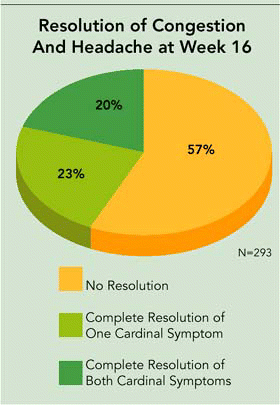Dr. Bhattacharyya further said that the real reason amphotericin B is controversial is because there’s a lot more to be learned about the pathophysiology and the mechanism of action of amphotericin B. Also, the underlying evidence for fungi as the cause-complete for CRS is actually weak. If you look at detailed studies, you can find people who have evidence of an allergic sensitivity to the fungus, but no symptoms.
Explore This Issue
March 2008Another component, he said, is that there is evidence that amphotericin B as a chemical agent alone is an anti-inflammatory, meaning that it may be working on the inflammation in chronic rhinosinusitis but not killing fungus.
On the plus side, Dr. Bhattacharyya said amphotericin B is a relatively low-toxicity agent when applied topically. I see little downside in trying this as one modality of therapy for patients who are medically refractory, he said, adding that it might be a good choice for patients who have already had surgery (surgery that allows the drug to reach the surface of the sinus cavities more directly). I do have a subset of patients who have benefited from it. But, I’ve also had patients who have not.
About Amphotericin B
An antifungal treatment-specifically, amphotericin B-was chosen by the Mayo Clinic and later tested by others for efficacy in treating CRS. Originally extracted from the filamentous bacterium Streptomyces nodosus, amphotericin B is used to kill fungus that can cause serious or life-threatening infections, but it is not effective against bacterial infections or viruses. Although administration of the drug can cause side effects-some potentially severe-the small amount used as a lavage to kill noninvasive fungus in the nose and sinus cavities is considered much safer. It has low systemic absorption, with less than 5% systemic absorption across mucous membranes. As its mechanism of action, amphotericin B binds to sterols-preferentially to the primary fungal cell membrane sterol, ergosterol-disrupting osmotic integrity of the fungal membrane. The result is leakage of intracellular potassium, magnesium, sugars, and metabolites, followed by cellular death.
©2008 The Triological Society

Leave a Reply